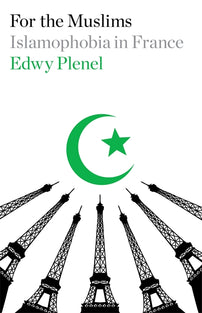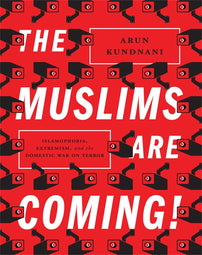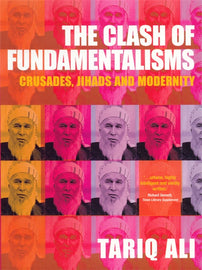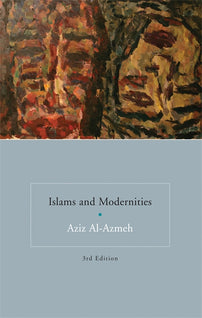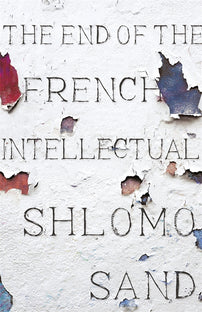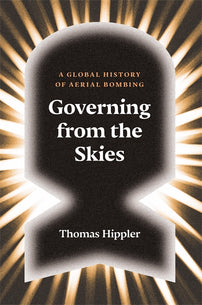Wars Don't Solve the Problem: they Make it Worse
A response to the debate on terrorism and war: the need to avoid escalating forms of repression in the face of attacks by using justice and the rule of law rather than violence.

"War is not a strategic response to terrorism. Without being its sole cause, it feeds the phenomenon it claims to fight." Such is the so-called “pyromaniac-firefighter” thesis, defended by sixty scholars, artists, and intellectuals, in an article published on the website of the French magazine L’Obs on November 14, 2020, and translated into English by Verso. This text, calling for a public and democratic debate on the wars and military interventions waged by France and other "Western" states, has partly achieved its goal: generating discussion.
Supporters of the "pyromaniac-firefighter" thesis point to cases that support their argument: the attacks in Madrid and London in 2004 and 2005, following the invasion of Iraq by these two countries; those of ISIS in France and Belgium, after these countries began bombing the organization in Iraq in September 2014; or the multiple attacks against the United States, the most interventionist country in the world. Symmetrically, critics of the pyromaniac-firefighter thesis point out that states which rarely intervene militarily abroad such as Germany and Austria have also recently been hit by attacks. This debate will remain a dialogue of the deaf if we do not get a more global, solid, and well-documented picture of the two phenomena in question. And this image does exist. Quantitative and qualitative studies have grasped, proven, and explained the relationship between military interventions abroad and the phenomenon of terrorist attacks.
A statistically measurable phenomenon
Political scientist Robert Pape has studied the causes of all suicide attacks around the world between 1980 and 2003. For the period, most of these acts were carried out by the Tamil Tigers of Sri Lanka, a secular movement comprised of Hindus, Muslims, and Christians. He therefore concluded that there were "few links between suicide terrorism and Islamic fundamentalism, or any of the world's religions."[i] In the great majority of cases, the attacks came from groups resisting the occupation of their territory by a power they considered foreign. This conclusion amounted to a radical criticism of the strategy chosen by the United States and its allies after 2001 to fight terrorism. By opting for war, they were using the instrument at the origin of the evil they claimed to be fighting.
Partisans of the Global War on Terror replied that Pape's thesis may have been valid for the twentieth century, but that al Qaeda had ushered in a new era of fanatical and religious terrorism. Robert Pape then teamed up with James Feldman in 2010 to produce a new survey taking into account the intervening years (2003- 2009). The thesis was confirmed: "overall, foreign military occupation explains 98.5% - and the deployment of US combat forces 92% - of the 1,833 suicide terrorist attacks perpetrated in the world over the last six years"[ii].
The work of Pape and Feldman paved the way for numerous other studies which confirmed the hard core of their thesis and refined its contours. For example, the statistician Alex Braithwaite has studied the determinants of some 12,000 transnational terrorist attacks around the world between 1968 and 2010. The databases he worked on are larger than those of Pape and Feldman. They include not only suicide attacks, but also non-suicidal attacks perpetrated against civilians. Braithwaite classified countries by year into two categories: "interventionist" (those which deploy more than 1,000 soldiers abroad per year, on average) and "non-interventionist" (those which deploy fewer than 1,000 soldiers abroad annually). He found that "interventionist" countries are statistically sixty times more likely to be affected by transnational terrorist attacks than non-interventionist countries.[iii]
Aware that correlation does not necessarily equal causation, and that causality can in fact work the other way around, Braithwaite also examined the chronology of events. He found that in the vast bulk of cases, interventions precede the attacks in question. He has even calculated that, on average, the risk of a state being targeted by an attack increases by 19% for every 1,000 additional soldiers deployed.[iv] This is borne out by more qualitative work on the mimetic nature of terrorist and counter-terrorist violence.
The war against terrorism as mimetic violence
René Girard forged the notion of mimetic violence to account for the phenomena of violent escalation.[v] When a conflict is prolonged, the belligerents forget why they are fighting. They imprison themselves in antagonistic representations of self and other, which become the real motor of violence. This is the case today when some explain that it is necessary to fight the "unbelievers" and others the "enemies of freedom."
Of course, this is not to say that terrorists and counter-terrorists are identical when they have such asymmetrical positions in terms of legitimacy. Yet by accusing the former of being solely responsible for the violence which they co-produce, the latter endanger their putative liberal ideals. Such is the trap into which democratic states and their armies fall when they overly broaden their conception of terrorism. In support of Saudi Arabia, the US government is now considering placing the Yemeni Houthis on its list of terrorist organizations. This decision would make it almost impossible to deliver humanitarian aid to a population that is already in a catastrophic situation.
The general public has an intuition of how escalating violence works. It is easy to see that the battlefield of counter-terrorism has widened dramatically since the United States responded to the attacks of September 11, 2001, by bombing and then invading Afghanistan. Today, the “theaters” of the war on terrorism led by the US and its allies include Iraq, Pakistan, Yemen, Somalia, Syria, and five countries in the Sahel. Western military involvement in these countries has often exacerbated local conflicts, and scholarly work on each provides in situ insight into the concrete mechanisms through which the activity of Western armed forces drives civilians to join armed groups, particularly those labelled "terrorists." Ultimately, it is because of this dynamic that entire societies, in Afghanistan and Iraq in particular, have found themselves on the brink of the abyss. The observation is not unique to researchers and critical intellectuals. Every year, the President of the United States finds on his desk a document called the "National Intelligence Estimate" (NIE), which summarizes the observations and recommendations of the intelligence agencies. The 2006 NIE stressed that the invasion of Iraq had "produced a strong negative backlash against the United States in the wider Muslim World that caused radical Islamist terrorist organizations to more effectively operate and recruit new members worldwide."[vi]
This logic of mimetic violence has had repercussions in Europe, as well. New counter-terrorist measures show little effectiveness, save in further reducing basic liberties. In the process, they generate new resentments among those who feel unjustly targeted.
The armed forces claim to control the phenomenon of the "pyromaniac firefighter" by sparing civilians and limiting "collateral damage." However, warlike counter-terrorism is responsible for more innocent deaths than terrorism. Terrorism has caused the death of some 4,000 civilians in Europe and North America since 2001, including the attacks of September 11. By conservative estimates, the threshold of 4,000 civilian (Afghan) casualties was reached after only three months of war in Afghanistan.[vii] Defense intellectuals reply that there has been much water under the bridge since the bloody wars in Afghanistan and Iraq and that "surgical" strikes might - finally! - solve the problem. According to estimates by the Airwars network, the international coalition’s bombing campaign against ISIS has claimed between 8,000 and 13,000 Iraqi and Syrian civilian deaths since September 2014. It could be argued that this military operation constitutes a lesser evil if it put an end to the massacres and human rights violations perpetrated by the organization in Iraq and Syria. However, this humanitarian argument must be considered separately if strategic thinking is to be possible. As a matter of fact, the record of past humanitarian air wars (Kosovo in 1999, Libya in 2011) should call for caution.
More or less secret, on the fringes of international law, counter-terrorist wars do not solve problems. Indeed, they tend to aggravate them, while failing to succeed in eliminating the sponsors of terrorism, who move from one place to another. Nor do they reduce the incidence of violent attacks within, quite to the contrary. States that wage war in the name of “security,” even if they do so in secret, cannot prevent reprisals (on their own territory) from degenerating into bloody horror, even when they try to contain the level of violence by hindering the most visible of their opponents’ logistics. The strategic interaction between spectacular killings and the use of drones or so-called precision bombing leads to escalation because war of this type, without a political goal and left to its own mimetic logic, comes increasingly to resemble more archaic forms of vengeance. Historical discontinuities do not prevent memory and its reinvention of the past from justifying present-day violence. Protests against the French presence in Mali are just one recent example.
Terrorist violence, bombings, drone attacks, and repressive states of emergency fashion a never-ending escalation, a permanently expanded zone of conflict, an infernal spiral. In reaction, it is necessary to reflect on responsible policies of de-escalation, to develop a more lucid representation of terrorism and the actual amount of violence that it generates, and to combat it using the tools of justice and the rule of law. A democratic debate is needed on these wars, which clearly do not constitute an adequate response to the attacks.
[book-strip index="1" style="display"]Text written by Mathias Delori (CNRS researcher at the Centre Marc Bloch of Berlin, Germany), Christophe Wasinski (professor at the Université Libre de Bruxelles, Belgium), and Didier Bigo (professor at Sciences Po Paris and at the department of War Studies of King’s College London, United Kingdom) and translated with the help of Grey Anderson. It has been co-signed by these specialists in the study of war, political conflict, international relations, foreign policy and/or of the impacted regions:
Grey Anderson (postdoctoral researcher at the École polytechnique), Adam Baczko (CNRS researcher at CERI), Rocco Bellanova (visiting professor at USL-B), Marie-Laure Basilien-Gainche (professor at the Université Lyon 3), Jean-François Bayart (professor at IHEID), Isaline Bergamaschi (professor at the Université Libre de Bruxelles), Laurent Bonnefoy (CNRS researcher at CERI), Laurent Bonelli (associate professor at the Université Paris Nanterre), François Burgat (CNRS research professor at IREMAM), Bruno Charbonneau (professor at the Collège militaire royal de Saint-Jean), Olivier Corten (professor at the Université Libre de Bruxelles), Marielle Debos (associate professor at the Université Paris-Nanterre), Gilles Dorronsoro (professor at the Université Paris 1), Gülçin Erdi (CNRS researcher at CITERES), Nadia Fadil (professor at KU Leuven University), Jacobo Grajales-Lopez (professor at the Université de Lille), David Grondin (professor at the Université du Québec à Montréal), Jean-Paul Hanon (researcher at CREC - Saint Cyr Coëtquidan), Caroline Guibet Lafaye (CNRS research professor at CED), Elspeth Guild (professor at Radboud University in Nijmegen), Emmanuel-Pierre Guittet (visiting researcher at CECLS), Thomas Hippler (professor at the Université de Caen), Thomas Lindemann (professor at the Université Paris-Saclay), Chowra Makarémi (CNRS researcher at IRIS), Médéric Martin-Mazé (associate professor at the Université Paris 8), Nadia Marzouki (CNRS researcher at CERI), Christian Olsson (professor at the Université Libre de Bruxelles), René Otayek (CNRS research professor at LAM), Michel Peraldi (CNRS research professor at IRIS), Angelina Peralva (professor at the Université Toulouse - Jean Jaurès), Gabriel Périès (professor at IMT-BS), Francesco Ragazzi (professor at Leiden University), Eric Sangar (associate professor at Sciences Po Lille), Alessandra Russo (researcher at the University of Trento), Anastassia Tsoukala (associate professor at the Université Paris-Saclay), Nader Vahabi (sociologist at LISST - Université de Toulouse), Jérôme Valluy (associate professor at the Université Paris 1), Simon Varaine (PhD student at Sciences Po Grenoble)
Originally published at: https://www.nouvelobs.com/idees/20201206.OBS37144/terrorisme-les-guerres-ne-resolvent-pas-le-probleme-elles-l-aggravent.html
[i] Robert A. Pape, Dying to Win: The Strategic Logic of Suicide Terrorism (New York, Random House, 2005), p. 4. See also “Mort volontaire combattante: Sacrifices et strategies,” Revue Cultures & Conflits 3:63 (2006), 7-9.
[ii] Robert A. Pape and James K Feldman, Cutting the Fuse: The Explosion of Global Suicide Terrorism and How to Stop It (Chicago: University of Chicago Press, 2010), p. 28
[iii] Alex Braithwaite, "Transnational Terrorism as an Unintended Consequence of a Military Footprint," Security Studies 24 (2015), p. 364.
[iv] Idem, p. 365
[v] René Girard, Violence and the Sacred, trans. Patrick Gregory (Baltimore: Johns Hopkins University Press, 1977 [1972]).
[vi] James A. Piazza and Seung-Whan Choi, "International Military Interventions and Transnational Terrorist Backlash," International Studies Quarterly 62:3 (September 2018), p. 686–695, 686.
[vii] Marc W. Herold, "The Obama/Pentagon War Narrative, the Real War and Where Afghan Civilian Deaths Do Matter," Revista Paz y Conflictos (Granada, Spain), downloaded online on December 5, 2016 (https://paulcollege.unh.edu/faculty/herold), 5, 2012, p. 44-64, p. 49.

